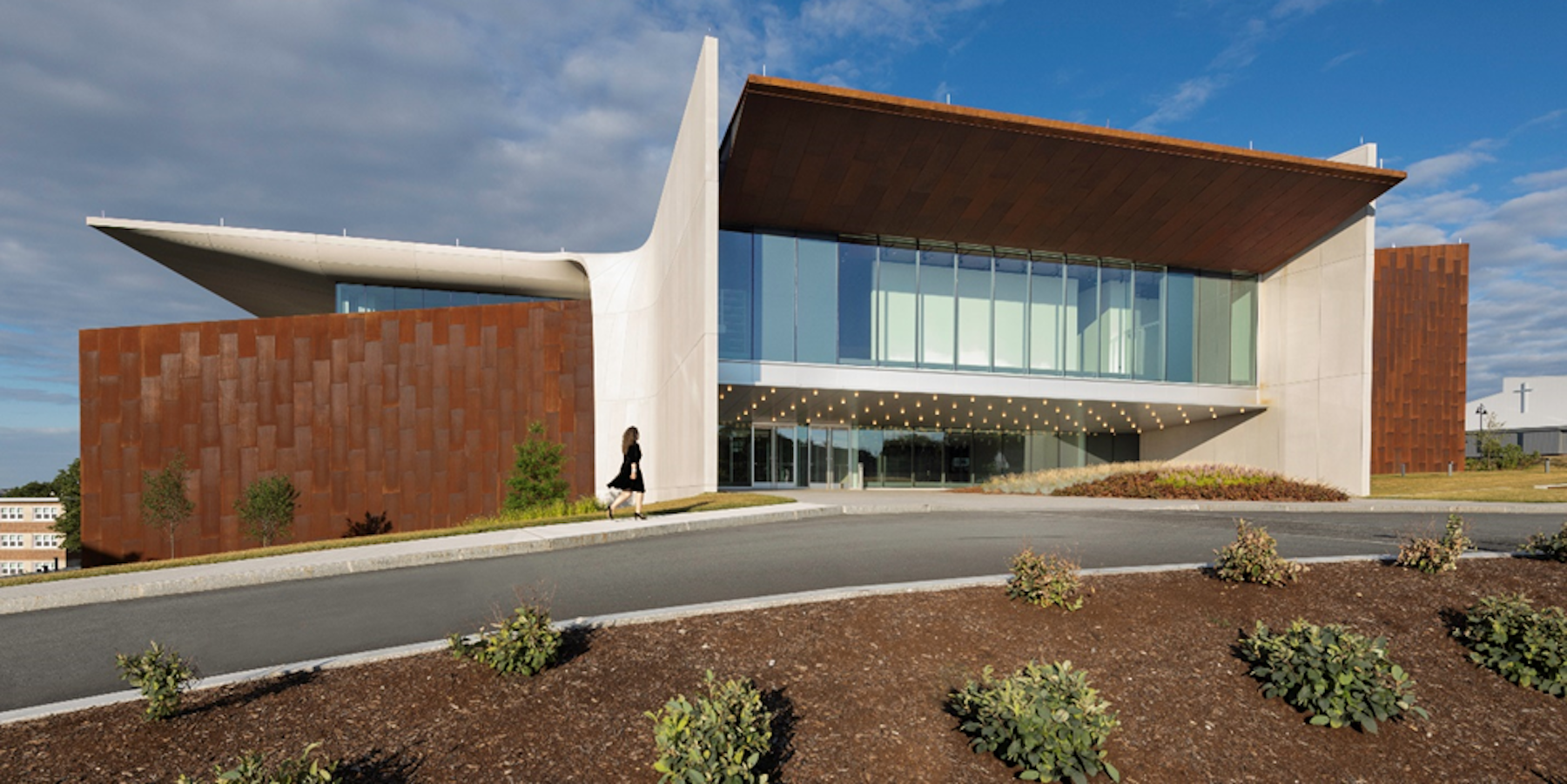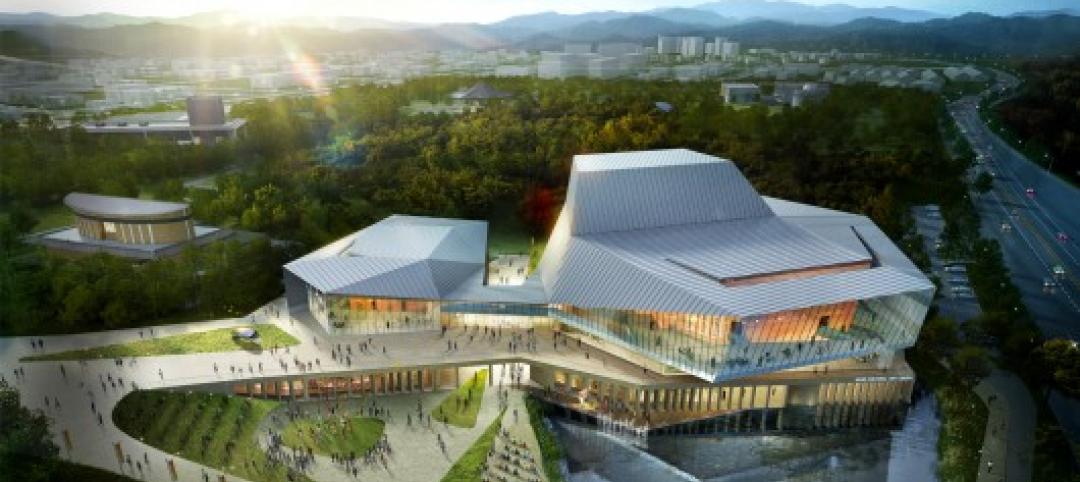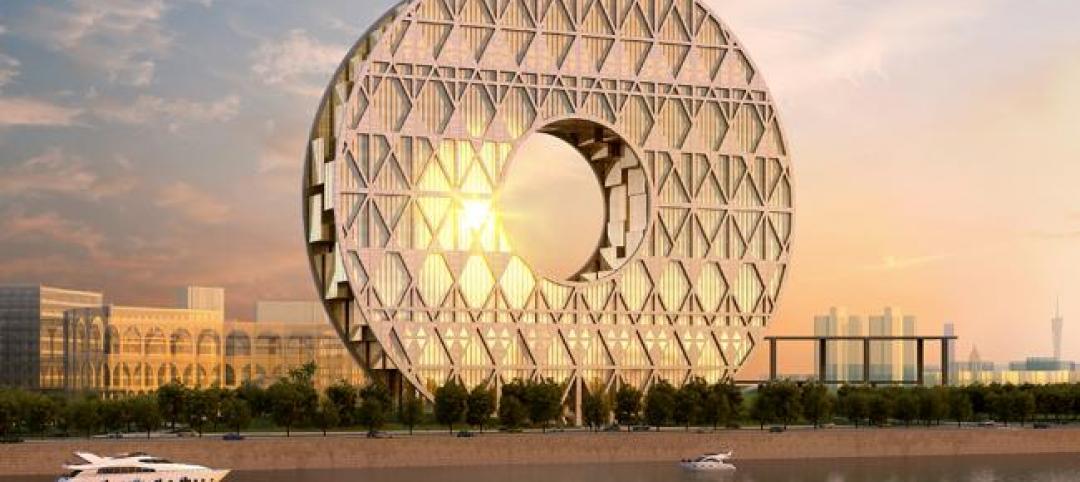In Worcester, Mass., a one-hour drive from Boston, the College of the Holy Cross has completed its $110 million Prior Performing Arts Center. Designed by Diller Scofidio + Renfro (DS+R), the 84,000-square-foot facility serves as an incubator for multidisciplinary learning and creativity, with venues for both fine arts and performing arts. The PAC will support creative collaboration among faculty and students across all academic disciplines.
Among the PAC’s key features, the Beehive is a flexible space that includes a shared multimedia teaching area for electronic music and musical composition courses, sound recording, sound editing, and video and film editing. The Beehive also provides collaborative workspaces, multipurpose rehearsal spaces, a cafe, and gathering spaces with movable furniture.
The Luth Concert Hall, a 400-seat convertible concert hall and proscenium theater, serves as the College’s principal venue for symphonic music, chamber music, jazz, gamelan, and opera, as well as musical theater and dance. The Boroughs Theatre is a 200-seat, fully flexible experimental theater space. And the Cantor Art Gallery offers a variety of interdisciplinary exhibits and increased exhibition and storage space.
Support spaces include a scene shop, costume design studio, recording studio, lighting and set design study, and multi-use spaces to encourage collaboration among the arts and between the arts and other disciplines. Outdoor amenities include a small amphitheater, an outdoor teaching area and workspace, a meditative garden, and a sculpture garden.
Major inaugural performances at the PAC will take place in December, including the world premiere of a new violin concerto composed by a College of the Holy Cross professor.
On the Building Team:
Owner: College of the Holy Cross
Executive architect: Perry Dean Rogers
Landscape architect: OLIN
Civil engineer: Nitsch Engineering
MEP engineer: Altieri Sebor Wieber
Structural engineer: Robert Silman Associates
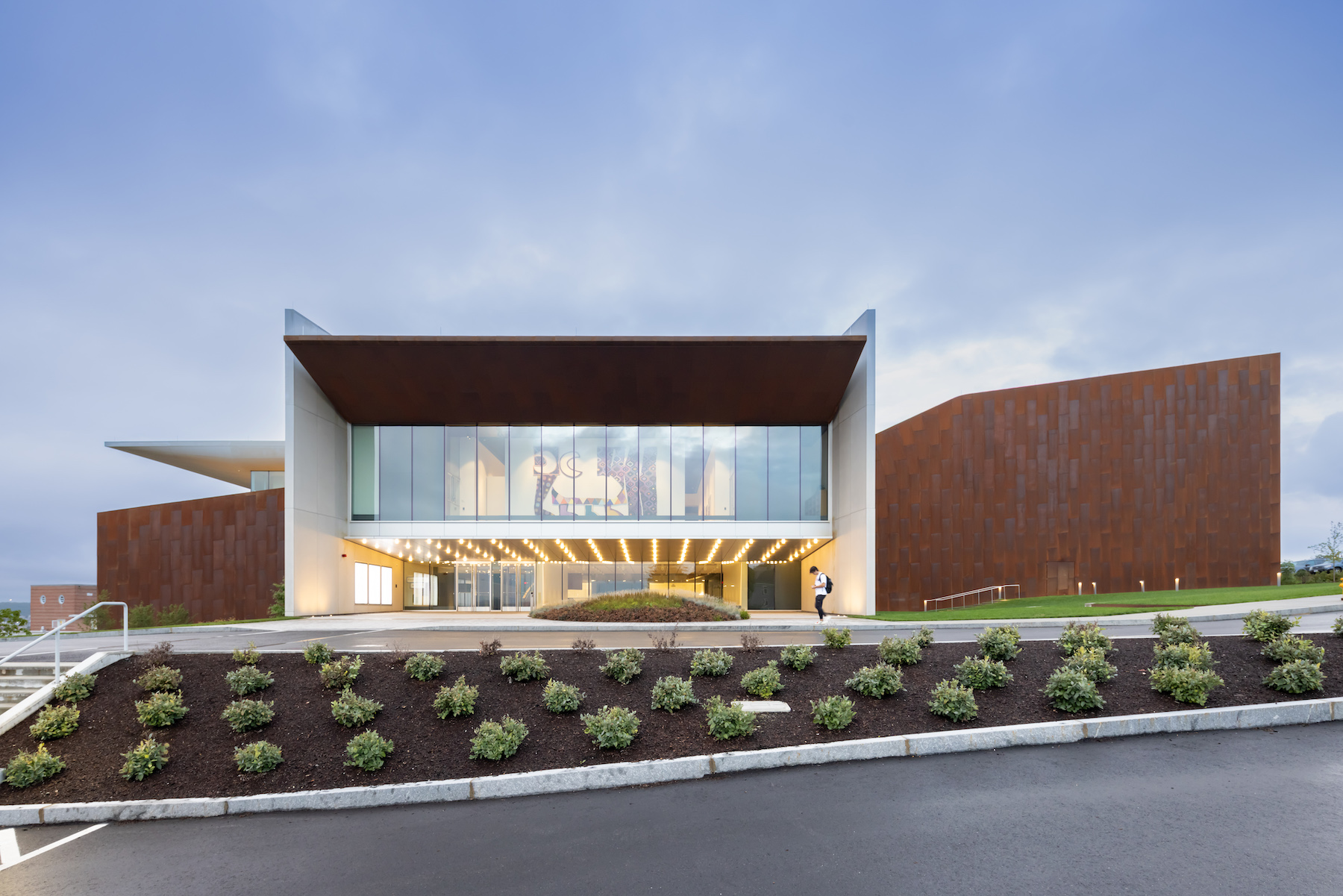
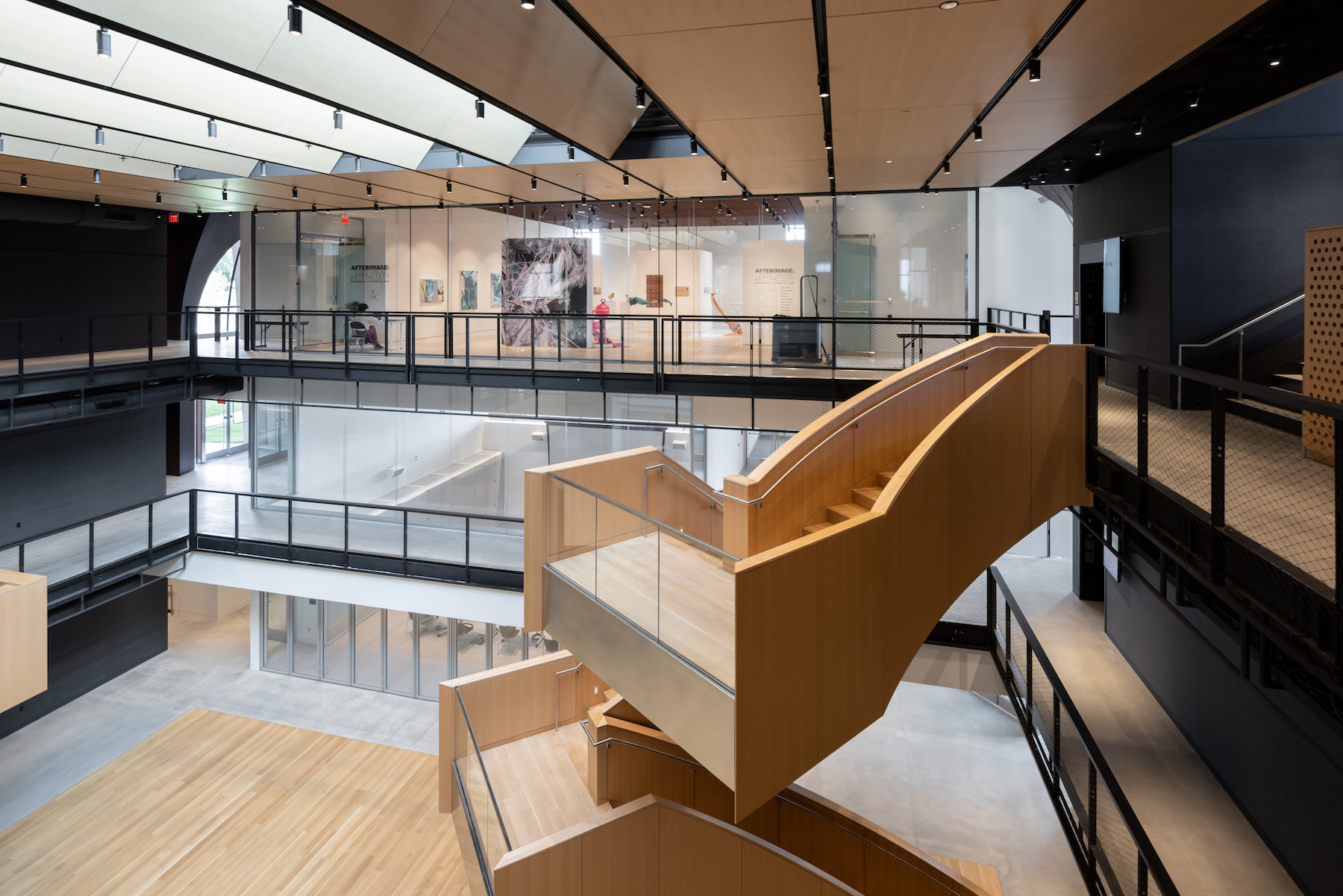
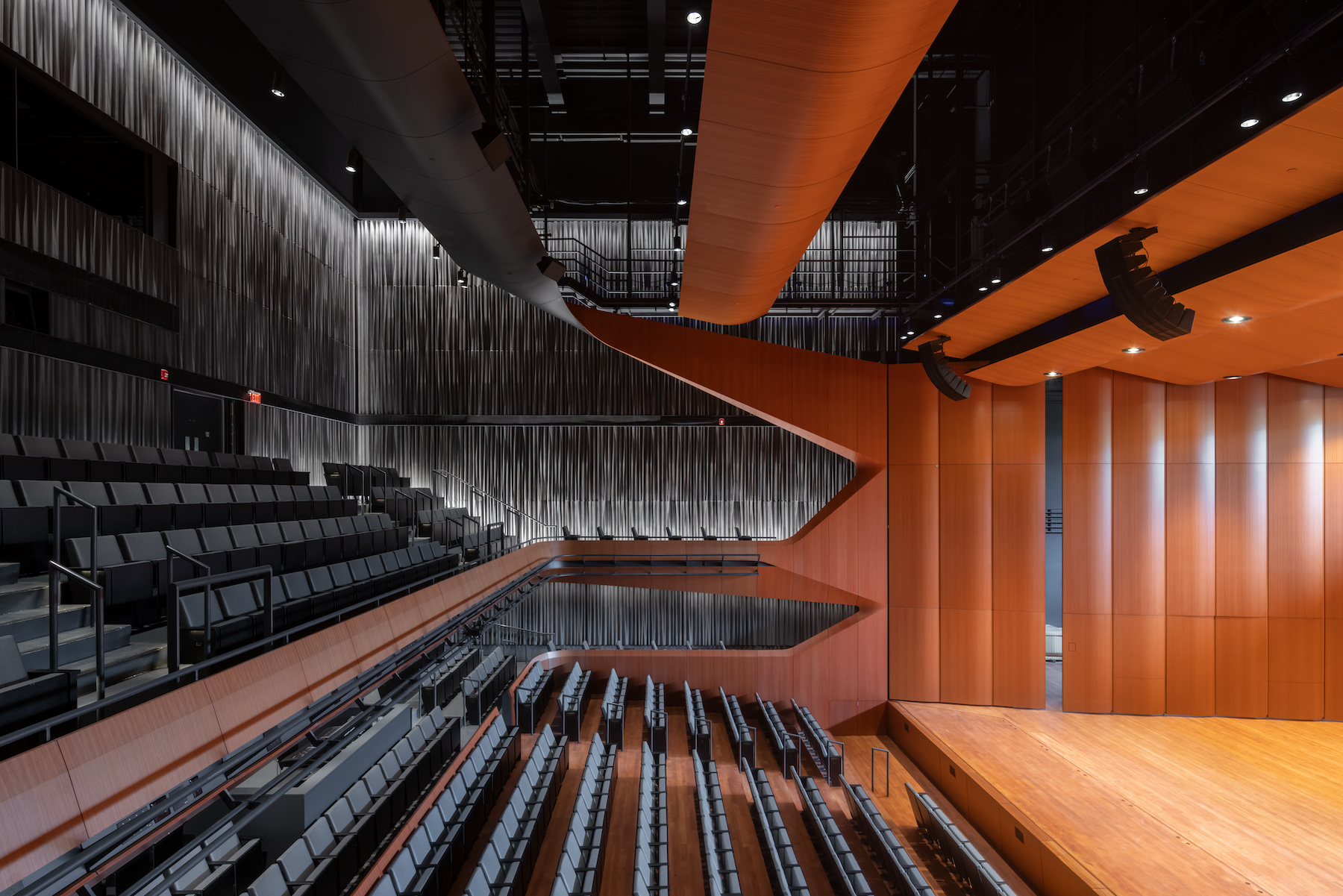
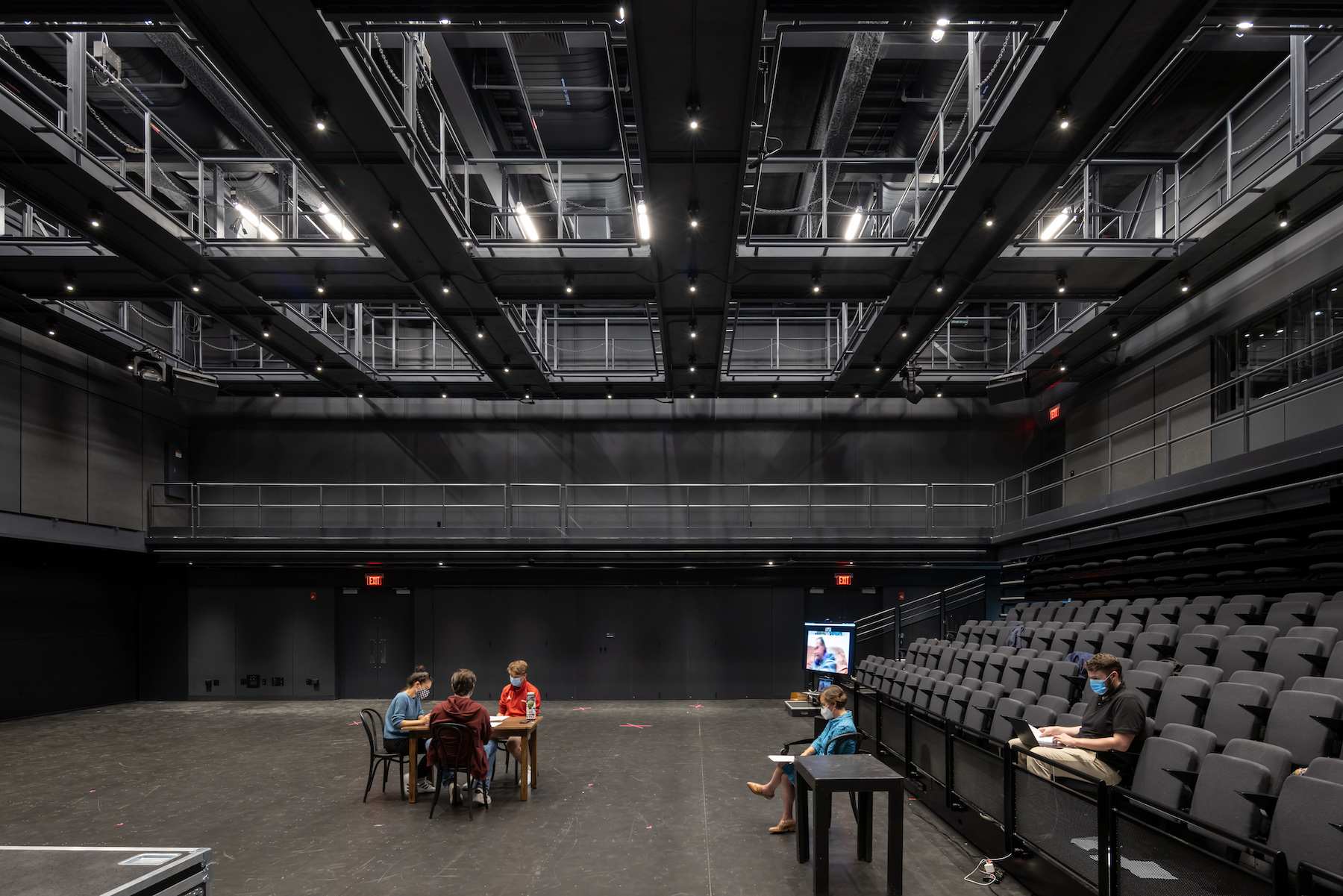
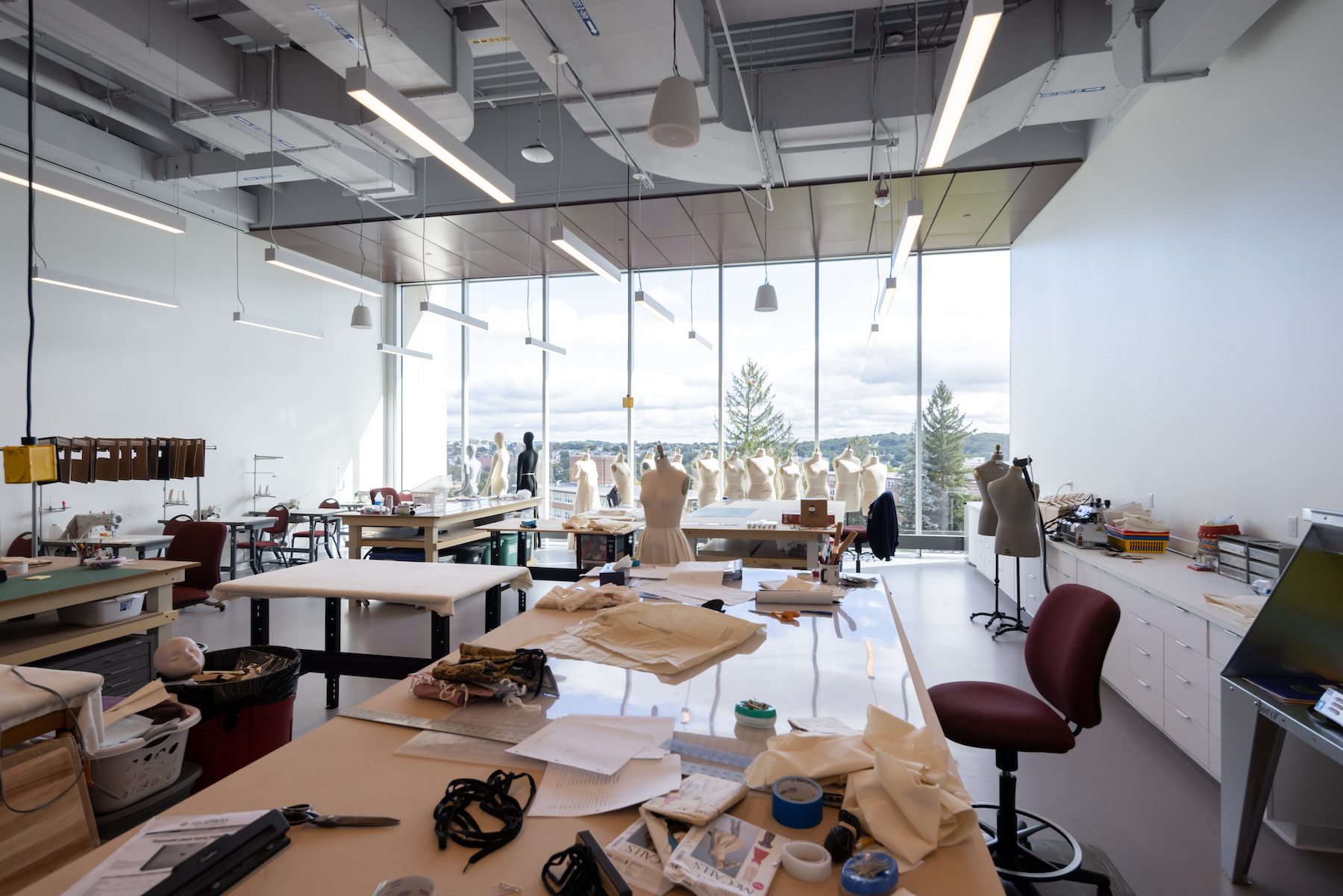
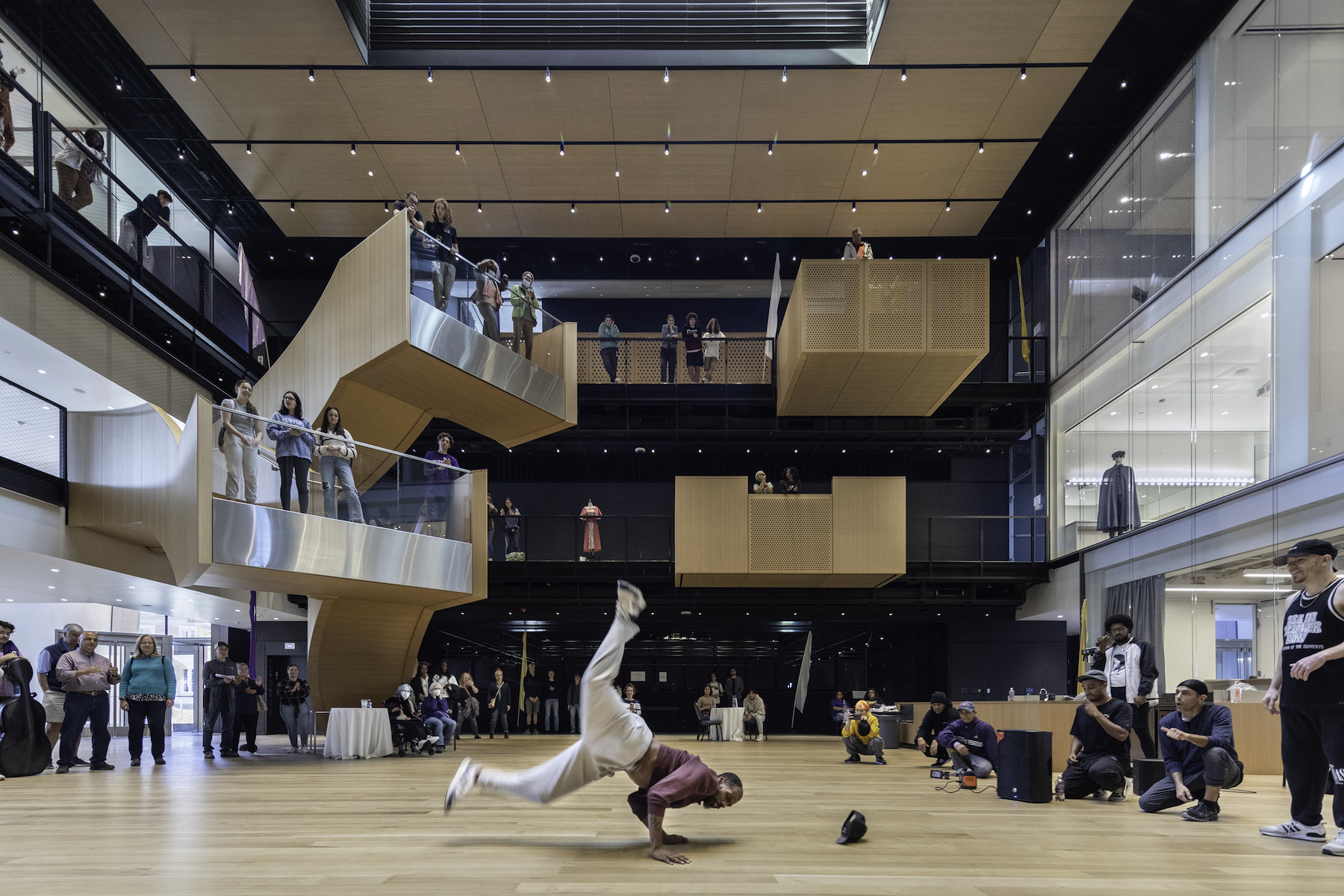

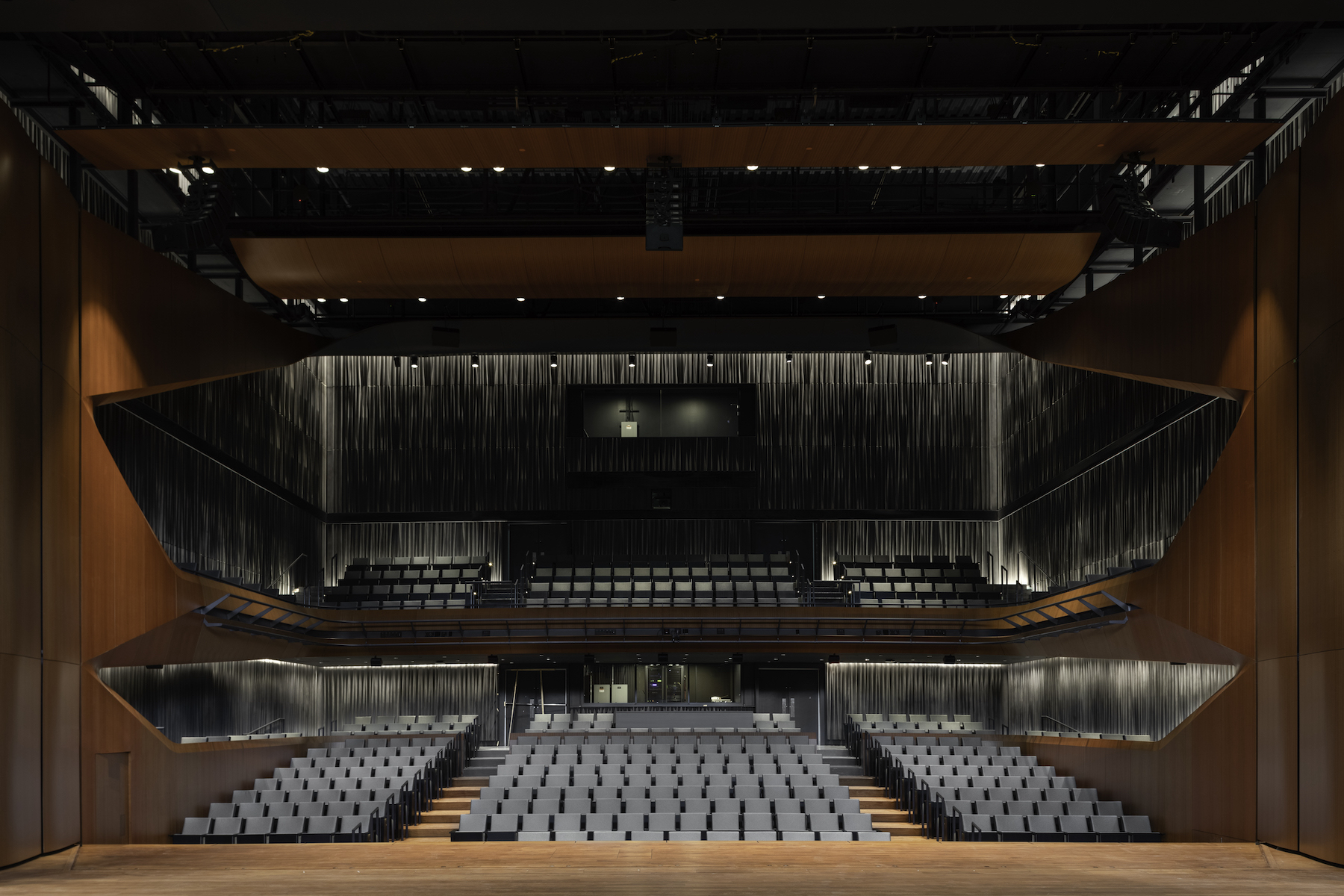
Related Stories
| Jan 2, 2015
Construction put in place enjoyed healthy gains in 2014
Construction consultant FMI foresees—with some caveats—continuing growth in the office, lodging, and manufacturing sectors. But funding uncertainties raise red flags in education and healthcare.
| Dec 28, 2014
AIA course: Enhancing interior comfort while improving overall building efficacy
Providing more comfortable conditions to building occupants has become a top priority in today’s interior designs. This course is worth 1.0 AIA LU/HSW.
| Nov 26, 2014
USITT Selects Bahrain National Theatre for Honor Award
The Bahrain National Theatre will be recognized with an Honor Award by the United States Institute for Theatre Technology (USITT) in 2015.
| Nov 18, 2014
Fan of the High Line? Check out NYC's next public park plan (hint: it floats)
Backed by billionaire Barry Diller, the $170 million "floating park" is planned for the Hudson River, and will contain wooded areas and three performance venues.
| Nov 17, 2014
'Folded facade' proposal wins cultural arts center competition in South Korea
The winning scheme by Seoul-based Designcamp Moonpark features a dramatic folded facade that takes visual cues from the landscape.
| Oct 23, 2014
China's 'weird' buildings: President Xi Jinping wants no more of them
During a literary symposium in Beijing, Chinese President Xi Jinping urged architects, authors, actors, and other artists to produce work with "artistic and moral value."
| Oct 20, 2014
UK's best new building: Everyman Theatre wins RIBA Stirling Prize 2014
The new Everyman Theatre in Liverpool by Haworth Tompkins has won the coveted RIBA Stirling Prize 2014 for the best building of the year. Now in its 19th year, the RIBA Stirling Prize is the UK’s most prestigious architecture prize.
| Oct 16, 2014
Perkins+Will white paper examines alternatives to flame retardant building materials
The white paper includes a list of 193 flame retardants, including 29 discovered in building and household products, 50 found in the indoor environment, and 33 in human blood, milk, and tissues.
| Oct 15, 2014
Harvard launches ‘design-centric’ center for green buildings and cities
The impetus behind Harvard's Center for Green Buildings and Cities is what the design school’s dean, Mohsen Mostafavi, describes as a “rapidly urbanizing global economy,” in which cities are building new structures “on a massive scale.”


